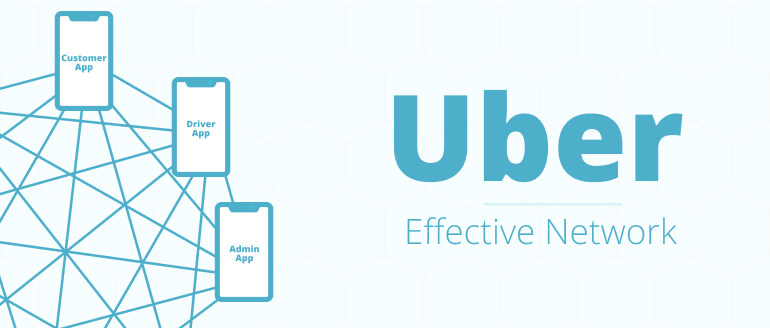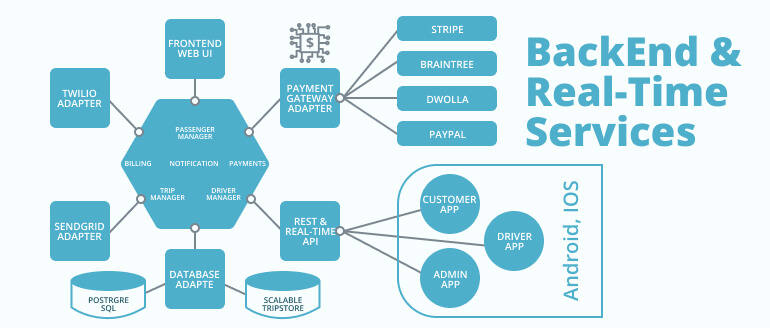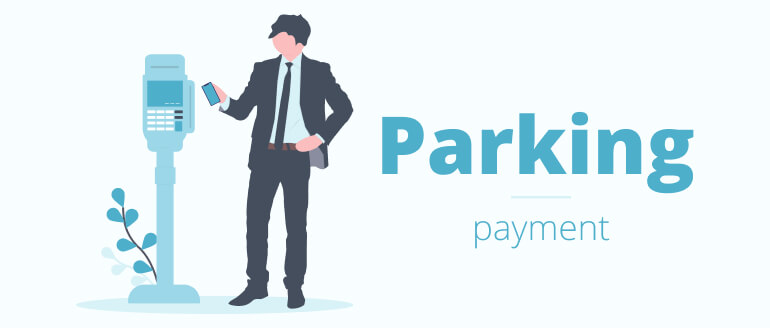"Ultimately, progress and innovation win."
- Travis Kalanick, co-founder of Uber
Remember the world before Uber? Taxi drivers probably recall it with sweet nostalgia. The explosive growth and frequent court trials of Uber Technologies made it one of the most fascinating companies of the decade.
This San Francisco-based startup had everything to succeed: modern technologies, a solution to a local problem, the "when and where," and an insightful marketing strategy. But on top of that, Uber was also the first of its kind, which was the reason it drew so much attention. It changed our habits and created a new lifestyle. Now, when we need a taxi, the first thing that comes to mind is to open the Uber app and tap a button. And that's what's called business success.
It all started in 2008 when two friends met at a tech conference in Paris. The idea to build the innovative application hit them when they couldn't get a cab on a frosty evening. In 2010, the service was tested in New York and then San Francisco. Just six months later, Uber counted 6,000 users and 20,000 completed rides.
Today, the number of daily rides via the mobile app exceeds 15 million. The net revenue of Uber in 2019 was $14 billion. The company earned 2nd place among the most disruptive companies, according to CNBC, with SpaceX at the top of the list.

Uber's numbers and titles make startupers restless and serve as the main source of inspiration to many of them. Uber is a business role-model many entrepreneurs try to recreate. In this article, we'll discuss the technical details, marketing, and critical aspects you should know to make an app like Uber.
How does Uber Work?
First of all, Uber offers a solution to a general problem that affects millions of people. The startup ruined the taxi monopoly in many countries and reinvented private transportation. Additionally, Uber offered great benefits to both passengers and drivers by avoiding the chicken-and-egg problem that haunts the creators of either-way markets. This is important to understand because when we talk about how the application works, it's not only about the technical side.
Uber is a free iOS and Android mobile application that serves to connect passengers and riders 24/7. This service is a sort of middleman as it doesn't own cars but offers all the necessary infrastructure for a safe, win-win partnership for both parties of the service.
The mobile application is integrated with Google Maps, so users can see where the nearest car is and when the car is estimated to arrive. Every ride request is then addressed to a driver who can accept or reject it. Passengers can check the information about drivers (name, car, and the driver's rating) and track their arrival online.
Uber drivers may call or send text messages to confirm they are on the way. As soon as the car arrives (usually within a couple of minutes), the user is notified. When the ride is complete, the app charges the user's card - no need to look for cash or wait for change. The passenger simply leaves the car, and the driver continues to the next request.
This way, for users, the app covers five key steps:
- Ride request
- Money deposit
- Driver search
- Applying charges when the ride is complete
- Request to rate the driver

If you want to make an app like Uber or something similar, you should understand it entails developing two separate apps, connected with an admin panel. Every component of the system has its functionality, peculiarities, and release demands.
Customer App Features
Uber's ability to provide users with a wide choice of vehicles at any time and grant their request within ten minutes is the key to product success. Passengers receive quality service: they get the price in advance, benefit from cost estimation, and are able to track drivers, their location and route. Pricing is clear, and users of all ages can manage the app.
Here are the essential functions required for creating the booking interface of a client app, which should be included in an MVP:
- Register/login and data management. Users can log in via email, telephone number, or a social network account.
- Geolocation and routing. This feature allows detecting the current location and creating a route, as well as setting and tracking it.
- Price calculator. The price of the ride is calculated and shown to users in advance. It is based on the car type, ride distance, demand, and other factors.
- Track a ride. The location of the car is mapped and tracked in real-time.
- Payment integration. Adding multiple modes of payment, money deposits, and allowing users to connect or change payment information.
- Push notifications. Inform the user about the milestones of each ride: the driver accepting the request, car data, money depositing, time of arrival, ride completion, rating score request, etc.
- Messaging. This feature is critical for connecting drivers and passengers via the app.
- Ratings & reviews. Ride ranking allows excluding bad drivers from the service.
- Ride cancellation. Allows canceling a ride within a set timeframe.
- Support. Allows contacting the service in case of a problem.
After the reality check of the idea, you can expand functions of future versions to the following:
- Ride history. Stores the data about all transactions and requests.
- Favorite directions. This allows the system to remember the most used routes.
- Schedule ride. Allows ordering a car in advance.
- Split payment. All passengers can split the cost of the ride.
- Promotions, special offers, promo codes. This is an important feature that encourages users to share information about your app and use it more often.
- Panic button. This feature guards passengers' security.
- Waitlist. During rush hour, passengers can be added to the waitlist, which allows the next available driver to take their request.
- Ride request for another person. Users can request a ride for other passengers using their account.
These features will help you launch a startup successfully.
Wondering how to build
an exclusive software product for your business?
CONTACT USBasic Features of the Driver App
Uber gives drivers the freedom to choose when to work and for how long. The app's major advantages include:
- An opportunity to use it as either a main or side income
- Order flow from the system
- Free choice of working hours
- Higher hourly rate compared to average market wages
Here are the basic features you'll need to make a mobile app for drivers:
- Register/profile of drivers. Registration in the system involves mandatory driver and vehicle verification by an administrator.
- "Active/inactive" status. While drivers choose working hours themselves, this feature allows them to control whether or not their car is shown on the map, depending on their status.
- Booking notification. Allows accepting or declining a booking.
- Payment data connectivity. Allows adding financial data for payment processing.
- Push notification. Notifies drivers about completed or canceled rides, passenger messages, etc.
- Navigation and route optimization. This feature builds the best route.
- Reports. Drivers can see weekly or monthly stats about their rides and income.
- Messaging. Connects drivers and passengers via text messages or calls.
- Passenger rating. Drivers can rate passengers after the ride is complete.
- Support.
After a successful launch, you can enhance the driver app with the following features:
- Cancellation. Free cancellation within a particular time frame.
- Destination. Allows choosing a preferred location for bookings.
- Wait time. If the ride is canceled after the set time frame or the wait time exceeds five minutes, passengers are charged an additional fee.
- Queuing. Accepting the next request while the previous ride is still active.
- Heat maps. Shows locations with the highest demand.
Some features of the user and driver apps are similar, but the main goal for developers is to balance them so that the system is stable and runs flawlessly.
The Admin App
The admin app is the last, but not least important component of the system. It must provide a user-friendly overview of all business processes, store user and booking data, and grant data access.
The features of the admin panel of an app like Uber are the following:
- General monitoring. Providing an overview of both client and driver apps, including ongoing rides, reviews, and requests.
- Management. Setting tariffs, special offers and discounts, changes in user and driver apps, rating and review check, and content management.
- Support. Receiving user requests, solving problems, and feedback.
- Billing. In case of conflicts or mistakes, managers can cancel the billing and return money to users.
- Database. Data extraction, processing, and downloading to improve the app or its services.
- Analytics. The system can be integrated with Google Analytics.
The technical team also selects the required functions for the admin panel and the meeting points of all three components for uber-like app development to create the best user experience and flawless work of the whole system.
Our Recommendations about the Launch of an App Like Uber
In the world of startups and venture investments, there's a separate group of services known as Uber for X. This segment represents different versions of the Uber business model to solve various challenges of daily life, beyond hailing cabs. The potential for "immediate satisfaction" is present in almost every niche, which means there are endless possibilities to explore, especially since Uber made its API open.
The creators of this revolutionary app show no signs of stopping. They compare their on-demand taxi service to the books Amazon used to sell: it's just the starting point to conquer the global service market, and UberEats is proof it's working. Today, UberEats is one of the fastest-growing food deliveries in the US.

The diversification strategy not only gives the company economic advantages but also creates an airbag for cases of force majeure like the novel coronavirus.
Uber's business model, also known as "immediate screen-to-screen service," has been tried and tested and has advantages you can apply in mobile app development for industries like:
- Beauty
- Healthcare
- Food and grocery delivery
- Cleaning
- Rent, and other areas where one needs a service and the other can provide it.
In this case, you won't go against large industry players. And even if you're determined to revolutionize the transportation industry, there are markets where Uber is underrepresented, or a local company can be its competition. The most important thing is to solve a challenge and understand the market you are reaching.

Along with technical aspects, you should pay special attention to the ease of use and attractiveness, particularly the UX/UI design, when you design your own app. Uber owes a part of its success to the fact that it boiled down the painful experience of taxi booking to merely tapping a button on a smartphone. Users from any age group can do this. Today, even the most innovative startups can't afford to be non-user-friendly. So, when assembling your team, don't forget to include skilled designers.
If you are looking for a unique idea for your business, answer the following questions:
- What's the biggest challenge people around you often face?
- What are the best ways to solve it?
- How can you implement them or transform these ways?
- Why should people use your product or service?
By making complicated things simpler and expensive things more accessible, you can expand a once limited market and find a compelling reason to create your own app.
How to Build a Mobile App Like Uber
The best way to build an uber-like app is to build it from scratch. Automatic app creators are only good for making a prototype or an MVP to test your idea. Still, even in this case, there's a risk of missing basic features, flexibility, and opportunities to make the necessary changes.
If you don't have technical professionals on your team, be sure to choose wisely when selecting a mobile app development company. Pay attention to their experience, portfolio, and workers. It's definitely a plus if your developer can take on as many responsibilities as possible, not only product development but also consulting on features, designing, uploading the app to AppStore and Google Play.
Wondering how to build
an exclusive software product for your business?
CONTACT USWithout getting into details, building an app like Uber requires:
- Back-end development
- Web development
- Native app development (Android/iOS)
- Design
- Management and quality assurance
Back-end development is the heart of the project's technical side. It creates a platform with all functional interactions, uniting business logic with user interfaces. For creating native apps, engineers usually use Swift and Kotlin languages, while the server-side can be built using technologies like Ruby-on-Rails, JavaScript, Python, Java.

The Agile Development process and breaking projects into milestones is an important advantage for a development team. This approach allows you to implement new features faster and releases more often, which speeds up the transition from MVP to MMP.
Another advantage is the ability to test an app after every milestone. Depending on the alterations and project phases, some or all types of the following tests can be applied:
- Smoke testing
- Functionality testing
- User-interface testing
-
Performance testing
- Usability testing
Thanks to this, you are much less likely to encounter functional problems in later versions.
Technologies Used to Build an App Like Uber
When creating an Uber-like app, it's essential to understand the technologies required for that. In this section, we'll discuss the most important ones.
Geolocation and Routing
Uber's tagline - "Get a ride at the tap of a button" - reflects a simple user experience but, under the hood, covers complicated architecture and processes.
To design a route and calculate the distance, you need a routing server. We suggest the CoreLocation platform for iOS and Geolocation API by Google for Android.
Routing and directions for iOS are possible thanks to MapKit. With Android, you should use Google Maps Android API.
Google Maps is integrated into both iOS/Android versions of Uber, but you can use other mapping alternatives in your own app.
Payment Gateway Integration

When it comes to payment gateway integration, it's crucial to ensure clients' financial data security. For this, you need a cashless transfer system that complies with PCI. You'll need a certification only if you're planning to store and process credit card data. Payment gateway providers like Braintree and Stripe are PCI-compliant, which makes integration much easier.
Push Notification & Messaging within the App
To notify users and allow exchanging messages in the app, you'll need the following tech stack:
- Push notifications are enabled by Google Cloud Messaging (GCM) for Android and Apple Push for iOS
- SMS-messaging is enabled via Twilio. You can also use other cloud communication platforms like Plivo, Nexmo, and Tropo.
How to Get Revenue from an Uber-Like App
The goal of every uber-like app is revenue. Just like any other marketplace, there are several ways of monetizing the app depending on the business model, market peculiarities, industry, and other factors.
Here are the most popular revenue sources:
- Driver commission
- Cancellation fees
- Premium subscription for more features
- Promotion and partnerships with other companies
Revenue sources must be mentioned in the business plan long before deploying the app.
Summing It Up
Like any other business, Uber didn't become successful overnight. It has required years of hard work and the minds of several leading strategists to reach the level Uber is on now. A brilliant product, wise market choice, and a fantastic team are the foundation of the best private startup in the world.
If you want to turn your idea into the business of your dreams, we recommend following (not copying) Uber's steps. A unique offer will help you avoid competition and accomplish your breakthrough. Remember, a well-established team is the secret of success, so let professionals create your mobile app and high tech software solution. It's one of the most important investments you can make into the success of your future product.